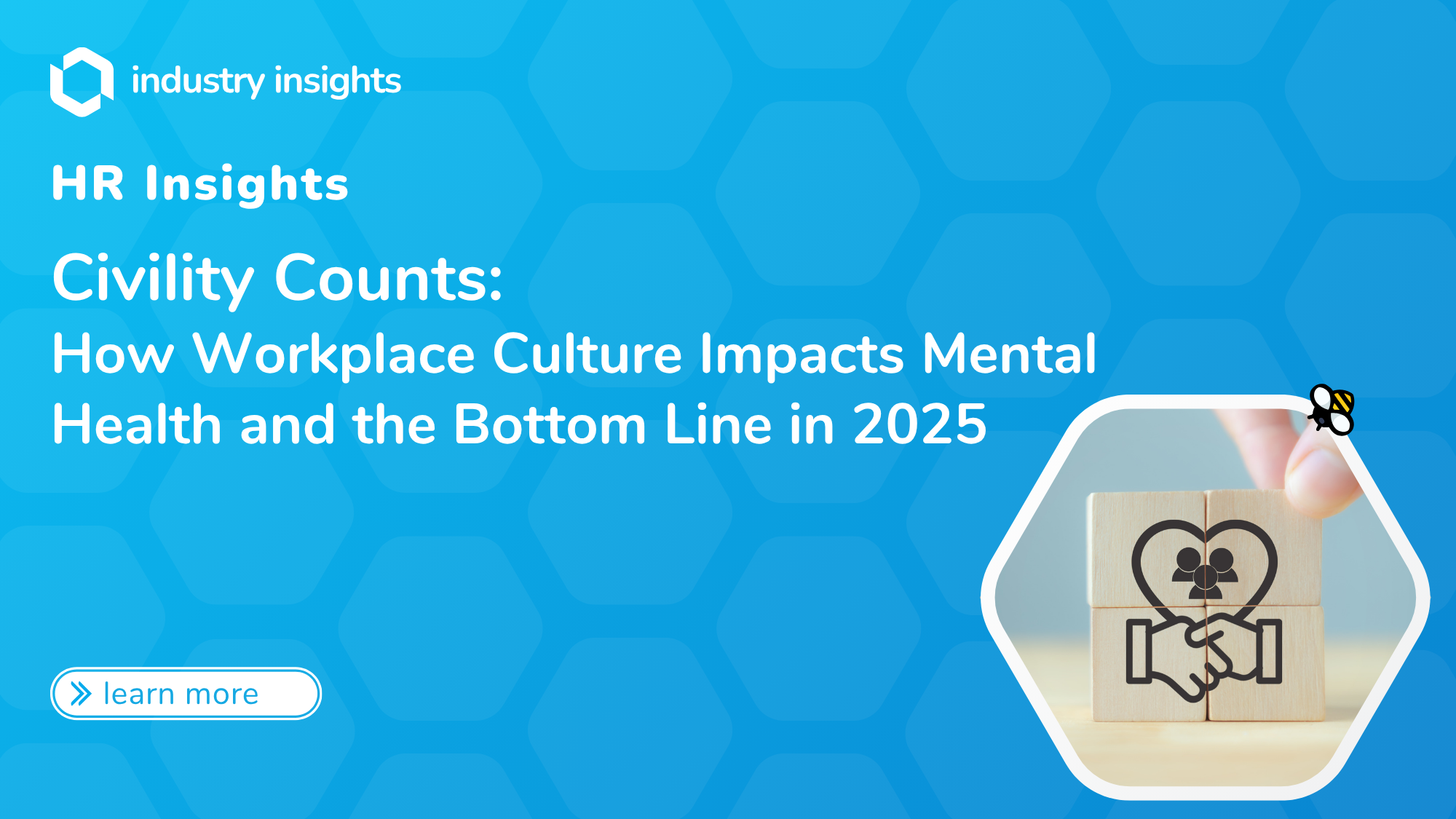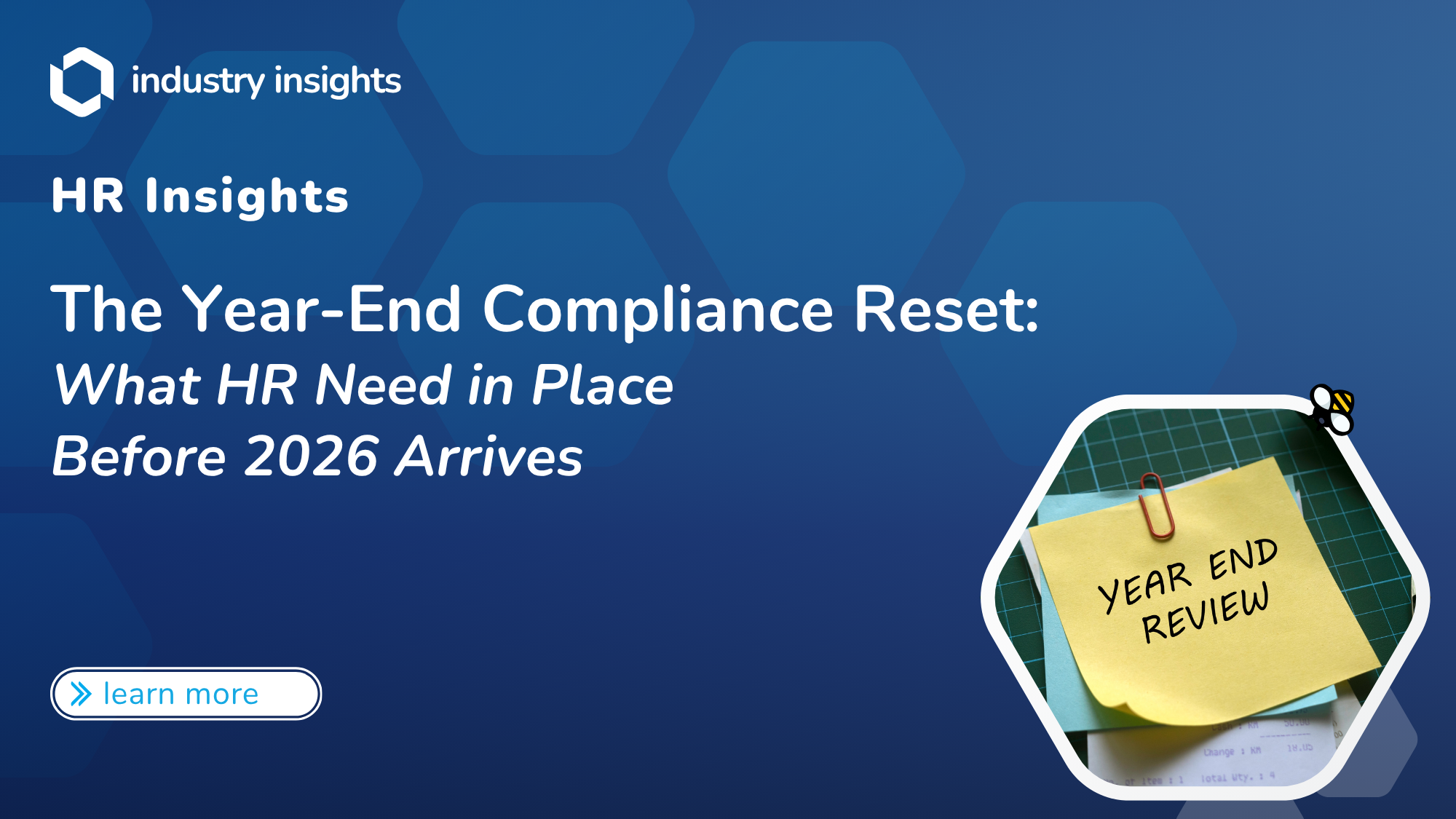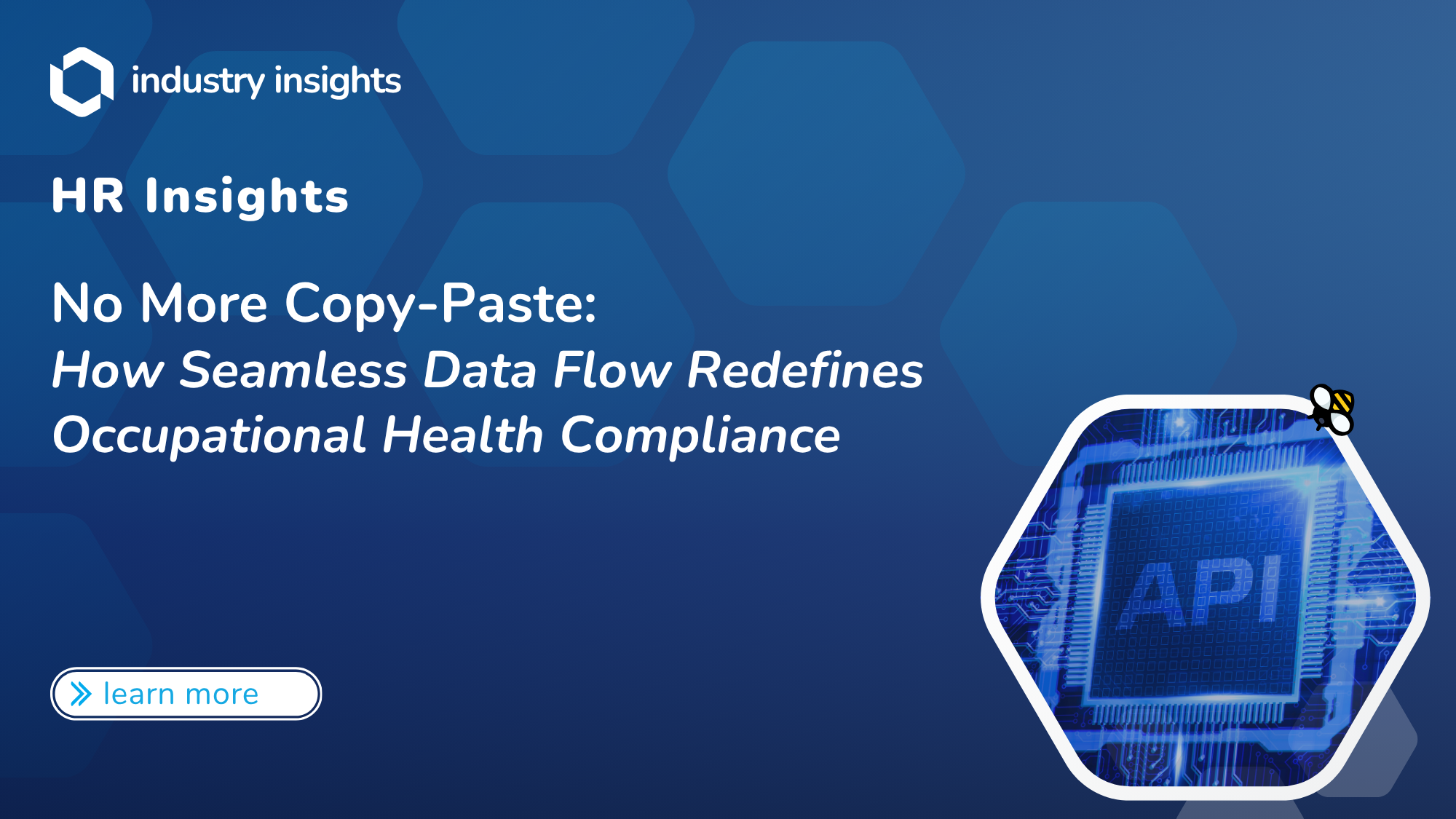Imagine prepping for an important meeting only to have a colleague constantly interrupt you. Annoying, right? Now, imagine that happening every day…
In today’s rapidly evolving workplace, civility isn’t just a nice-to-have—it’s a necessity for maintaining employee mental health, productivity, and overall organizational success. The significance of civility is underscored by recent data showing an overwhelming majority of U.S. workers recognize its critical role. According to the Society for Human Resource Management (SHRM), 94% of employees agree that fostering a civil workplace culture is essential for mental well-being.
Despite this widespread acknowledgment, workplace incivility remains alarmingly common. SHRM’s latest Civility Index for Q2 2025 reveals an ongoing challenge, with workers experiencing millions of acts of incivility daily. Specifically, the index currently stands at 47.3 out of 100, indicating that incivility is frequent enough to warrant immediate attention. Although this represents a modest 5-point improvement from Q1 2024, it is still a 2.4-point decline from the peak in Q4 2024.
The costs associated with workplace incivility extend beyond discomfort or strained interpersonal relations. Financially, U.S. organizations collectively lose over $2 billion daily due to reduced productivity and absenteeism resulting directly from uncivil behaviors. On an individual level, incivility significantly impacts mental health, with over half of affected workers reporting increased stress and irritability, surpassing other common workplace stressors (SHRM, 2025).
Given these profound impacts, addressing workplace incivility is not merely an HR responsibility; it is a critical strategic imperative. Organizations committed to creating respectful, supportive environments are better positioned to attract and retain top talent, boost employee morale, and ultimately, achieve superior performance.
This whitepaper explores how workplace civility shapes organizational outcomes, identifies key contributors to incivility, and offers practical solutions to nurture a more respectful workplace culture.
Understanding the Civility Index
Effectively addressing workplace incivility requires a clear understanding of its prevalence and impact, measured systematically by tools like the SHRM Civility Index. Introduced by the Society for Human Resource Management (SHRM) in early 2024, this index tracks the frequency of incivility incidents, providing organizations with actionable data to improve their workplace environments.
The Q2 2025 SHRM Civility Index currently stands at 47.3 out of 100, placing workplace civility within SHRM’s Zone 3 – indicating that incivility is common. While this represents a modest improvement of 5 points from Q1 2024, it’s a 2.4-point decline from the peak recorded in Q4 2024, underscoring ongoing instability in workplace interactions (SHRM, 2025).
Workplace incivility, characterized by rude or disrespectful behaviors, negatively affects employee well-being, engagement, and organizational productivity. Research by Porath and Pearson (2013) highlights that incivility significantly diminishes productivity, creativity, and commitment, often leading employees to disengage or leave the organization altogether. Similarly, Cortina et al. (2017) found that incivility contributes to increased job stress and decreased employee satisfaction, which can further exacerbate turnover rates and negatively impact organizational culture.
Given the widespread prevalence of incivility, estimated at nearly 198 million daily occurrences in the U.S., organizations cannot afford to underestimate its impact. By leveraging data-driven tools such as the Civility Index, companies can proactively monitor, assess, and address incivility, fostering healthier workplace environments that promote respect, collaboration, and sustained organizational success.
The Real Cost of Workplace Incivility
When incivility creeps into the workplace, it’s more than just a bad day at the office – it hits the organization’s wallet hard. SHRM’s recent findings highlight that workplace incivility collectively costs U.S. organizations a staggering $2.07 billion every single day due to lost productivity and absenteeism (SHRM, 2025).
These costs aren’t just monetary; they ripple outward, impacting team morale, collaboration, and overall productivity. Research from the Harvard Business Review shows that workers exposed to rude or disrespectful behavior become less creative, more withdrawn, and less willing to collaborate with colleagues (Porath & Pearson, 2013). Additionally, incivility can lead to increased employee turnover – an expensive issue given that replacing an employee can cost anywhere from 50% to 200% of their annual salary (Allen, Bryant, & Vardaman, 2010).
Moreover, the mental health toll of incivility is considerable. Workers experiencing or witnessing incivility often report heightened stress, anxiety, and irritability. According to the American Psychological Association (APA, 2023), chronic workplace stress significantly increases the risk of burnout, mental health disorders, and even physical illnesses, driving healthcare costs and lost productivity even higher.
Ultimately, the true cost of incivility goes far beyond the balance sheet – affecting employee well-being, workplace culture, and organizational sustainability. Addressing incivility proactively isn’t just the right thing to do morally – it’s a savvy business decision.
Spotlight on Employee Mental Health
The human side of workplace incivility often hides behind the numbers. Yet, its impact on employees’ mental health can be profound and lasting. SHRM’s latest research reveals that 53% of U.S. workers who’ve experienced or witnessed workplace incivility report negative effects on their mental health. Even more striking, 58% say incivility affects their mental health significantly more than other workplace stressors (SHRM, 2025).
Incivility isn’t just annoying—it’s genuinely harmful. The most commonly reported mental health effects include increased feelings of stress (50%) and irritability (44%), issues that can quickly escalate into more serious mental health conditions like anxiety and burnout. This aligns with findings from the World Health Organization (WHO), which identify chronic workplace stress as a leading contributor to burnout, significantly affecting employee productivity and overall health (WHO, 2022).
The repercussions of ignoring incivility-driven stress can be severe. Employees struggling with mental health issues often show decreased performance, reduced engagement, and higher absenteeism. According to a study published in the Journal of Occupational Health Psychology, persistent workplace stress can trigger emotional exhaustion, detachment, and even physical illness (Maslach & Leiter, 2022). This creates a costly cycle that affects not just the individual, but the entire workplace culture.
Fortunately, organizations have the power to disrupt this cycle. By promoting supportive work environments, prioritizing employee well-being, and swiftly addressing incivility, employers can significantly reduce the mental health risks associated with workplace stress, ultimately fostering happier, healthier, and more resilient teams.
Top Contributors to Workplace Incivility
To effectively tackle workplace incivility, it helps to know what’s fueling it in the first place. SHRM’s research identifies several key factors contributing significantly to uncivil behaviors at work in 2025:
- Political viewpoint differences: Strong opinions about politics remain the leading contributor to workplace conflicts. Passionate debates or differing views can quickly escalate into disrespectful exchanges, creating tension that lingers beyond the initial incident.
- Social issues: Differences of opinion related to societal concerns, such as diversity, equity, and inclusion (DEI), climate change, and public health, often ignite emotionally charged discussions. Without clear communication and mutual respect, these conversations can rapidly devolve into incivility.
- Economic concerns: Uncertainty about the economy, job security, inflation, and wages can heighten workplace stress. Employees feeling financially insecure may inadvertently project stress onto coworkers, escalating tensions and contributing to an uncivil environment.
- Reactions to political leadership changes: Transitions in political leadership, especially after elections, can amplify workplace tensions. Employees holding conflicting views about the new administration’s policies may become less tolerant of differing opinions, leading to friction.
- Racial or ethnic differences: Ongoing conversations about race, ethnicity, and equality continue to impact workplace dynamics. When managed poorly, these conversations can exacerbate tensions or unintentionally foster environments where microaggressions and misunderstandings thrive.
Understanding these triggers is a crucial step for organizations. It helps HR leaders and managers proactively develop strategies to address potential conflict areas—promoting healthy dialogues, fostering empathy, and creating environments where respectful disagreements are not only possible but encouraged.
Organizations that take proactive steps to address these contributors can transform potential sources of incivility into opportunities for positive dialogue, understanding, and growth.
Leadership’s Role in Fostering Civility
Workplace civility starts at the top – and leaders play a pivotal role in setting the tone. How managers respond to incivility significantly shapes workplace culture, influencing employee retention, engagement, and overall morale.
SHRM’s latest findings reveal that nearly half (45%) of U.S. workers say their supervisors provide considerable support after incidents of incivility. That sounds promising, but here’s the flip side: approximately two-thirds (66%) believe their managers could – and should – be doing more to proactively prevent incivility in the first place.
The stakes are high. Employees who receive low managerial support following incivility incidents are nearly 1.5 times more likely to start job hunting than those who feel strongly supported. Supporting this, research by Gallup (2023) consistently shows that managerial support directly correlates with employee retention, engagement, and overall job satisfaction. Simply put, when employees feel their leaders genuinely care, they stick around.
Practically, what does meaningful leadership support look like? It goes beyond addressing incidents after they occur – effective leadership involves proactive strategies, including:
- Regular communication: Encourage open dialogue about respect and civility. Ensure employees feel safe expressing concerns.
Training programs: Equip managers with skills to effectively mediate conflicts, recognize early signs of incivility, and swiftly intervene before minor incidents escalate. - Clear policies: Implement and consistently enforce policies that outline expectations around respectful behavior and the consequences of incivility.
- Modeling behavior: Leaders who actively demonstrate respectful communication set a powerful example, encouraging employees to follow suit.
When leaders prioritize civility, they’re not just managing conflicts – they’re actively building healthier, more productive, and cohesive teams. Investing in civility isn’t just good ethics – it’s smart business.
Practical Steps to Foster Civility
Creating a respectful workplace isn’t just about good intentions – it’s about taking clear, actionable steps. Here’s how HR professionals and organizational leaders can begin fostering civility today:
1. Set Clear Expectations
Make civility an explicit part of your organizational culture by clearly defining acceptable and unacceptable behaviors. Publish these expectations widely, include them in onboarding processes, and consistently reinforce them.
2. Implement Civility Training Programs
Regular training sessions help employees understand the importance of civility, recognize incivility, and develop effective communication and conflict-resolution skills. According to research from Pearson and Porath (2022), targeted civility training significantly reduces workplace conflicts and improves overall team cohesion.
3. Establish Reporting and Support Systems
Encourage employees to speak up without fear by creating confidential reporting systems. Ensure that leaders are trained to handle these reports promptly, effectively, and compassionately.
4. Prioritize Mental Health Resources
Offering mental health and wellness programs, counseling, and stress-management resources signals that employee well-being is valued. The American Psychological Association emphasizes that organizations providing robust mental health support see increased productivity, improved morale, and reduced turnover (APA, 2023).
5. Encourage and Model Positive Communication
Managers and leaders should visibly model respectful, open, and inclusive communication. Regularly acknowledging and rewarding respectful interactions reinforces a positive workplace culture.
6. Measure and Monitor Civility
Regularly conduct surveys and utilize tools such as the SHRM Civility Index to assess your organization’s civility climate. Tracking progress helps identify areas for improvement, celebrate successes, and continually refine strategies.
By adopting these practical steps, organizations not only reduce incivility but also build a culture where respect and collaboration flourish – driving better employee health, higher productivity, and ultimately, greater organizational success.
Conclusion: A Call for Civility
The evidence is clear: workplace civility isn’t just nice – it’s essential. Organizations that foster respectful and supportive environments see improvements not just in employee mental health and morale, but also in productivity, engagement, and financial performance.
SHRM’s Civility Index underscores the urgency of this ongoing challenge. Though we’ve seen modest improvements, with the current score at 47.3, incivility remains a common and costly occurrence. Addressing it proactively positions organizations for sustainable growth, reduces turnover, and builds resilient teams ready to face tomorrow’s challenges.
Cultivating civility is everyone’s responsibility – from frontline employees to top executives. By acknowledging the cost of incivility, recognizing key triggers, equipping leadership to respond effectively, and implementing practical solutions, organizations can shift from managing incivility to actively fostering civility.
Let’s commit today to creating workplaces where respect thrives, mental health is prioritized, and productivity flourishes. After all, civility isn’t just good manners – it’s good business.
Download the Whitepaper
Sources
Allen, D. G., Bryant, P. C., & Vardaman, J. M. (2010). Retaining talent: Replacing misconceptions with evidence-based strategies. Academy of Management Perspectives, 24(2), 48–64. https://doi.org/10.5465/amp.24.2.48
American Psychological Association (APA). (2023). Workplace stress. Retrieved from https://www.apa.org/topics/workplace-stress
Cortina, L. M., Kabat-Farr, D., Leskinen, E. A., Huerta, M., & Magley, V. J. (2017). Selective incivility as modern discrimination in organizations: Evidence and impact. Journal of Management, 43(5), 1579–1605. https://doi.org/10.1177/0149206311418835
Gallup. (2023). State of the global workplace report. Retrieved from https://www.gallup.com/workplace/349484/state-of-the-global-workplace.aspx
Maslach, C., & Leiter, M. P. (2022). Understanding burnout: New directions in research and intervention. Journal of Occupational Health Psychology, 27(3), 249–260. https://doi.org/10.1037/ocp0000272
Pearson, C., & Porath, C. (2022). Mastering civility: A manifesto for the workplace. Academy of Management Executive, 36(3), 15–31. https://doi.org/10.5465/ame.2022.0115
Porath, C. L., & Pearson, C. M. (2013). The price of incivility. Harvard Business Review, 91(1–2), 114–121. Retrieved from https://hbr.org/2013/01/the-price-of-incivility
Society for Human Resource Management (SHRM). (2025, March). SHRM Q2 2025 Civility Index. Retrieved from https://www.shrm.org/civility
World Health Organization (WHO). (2022). Burn-out an occupational phenomenon: International Classification of Diseases. Retrieved from https://www.who.int/mental_health/evidence/burn-out/en/




